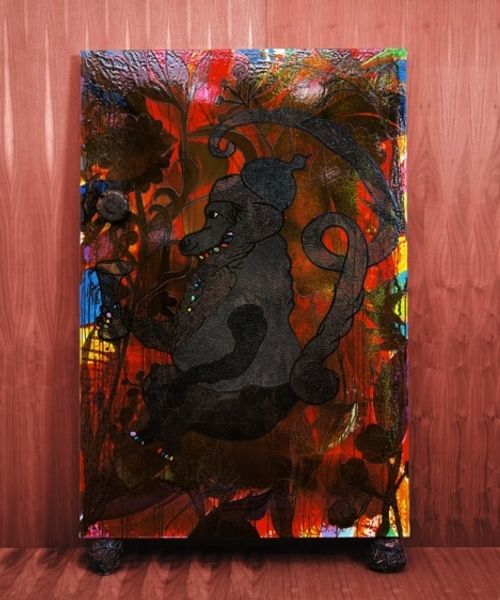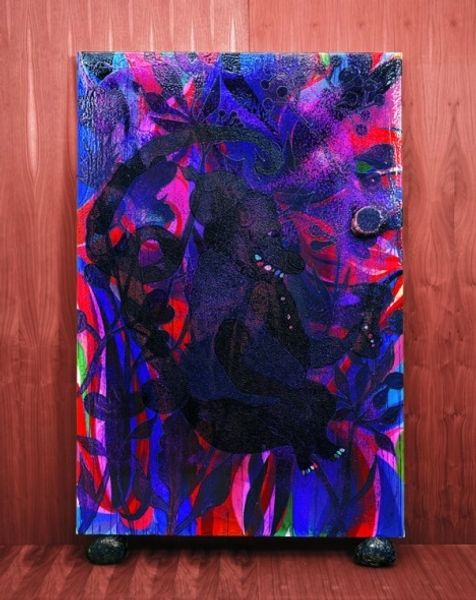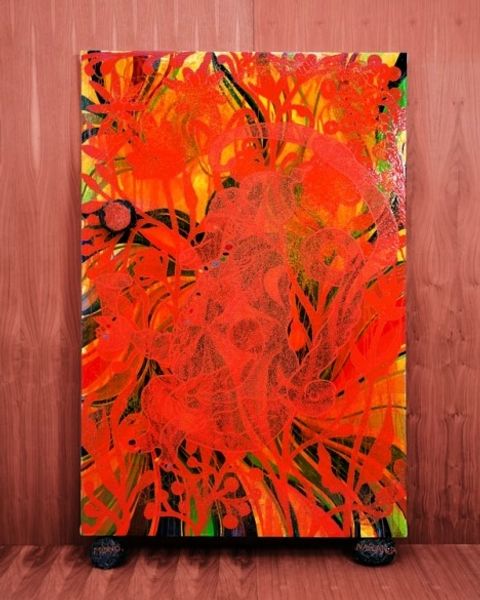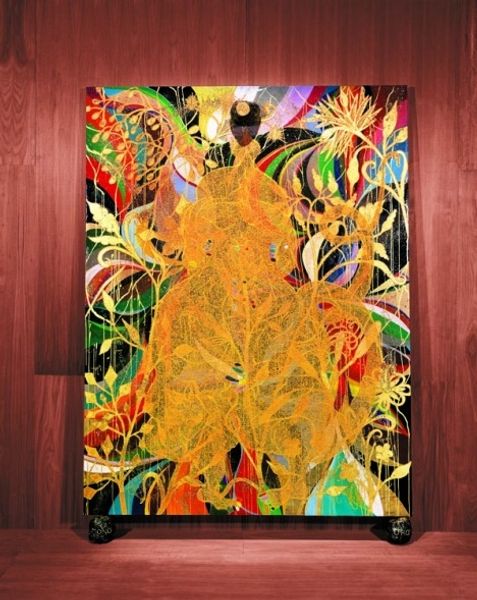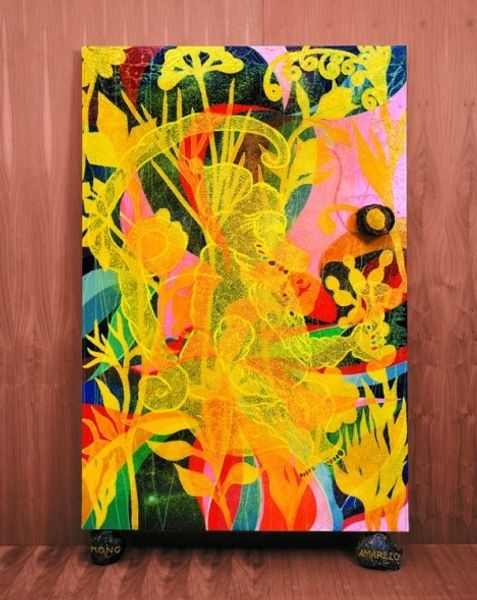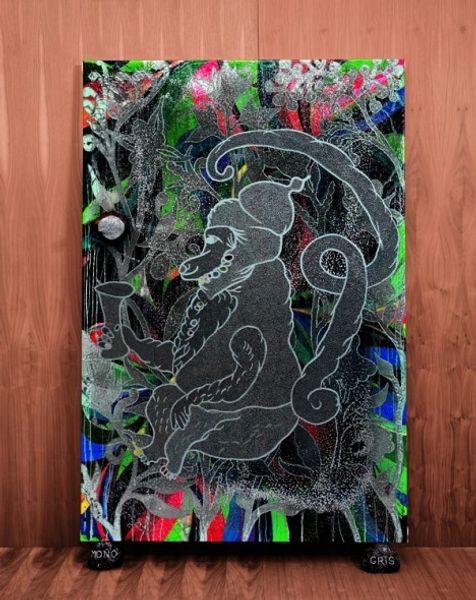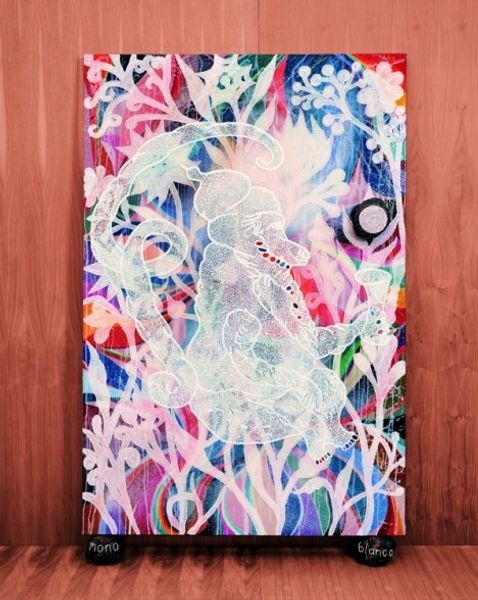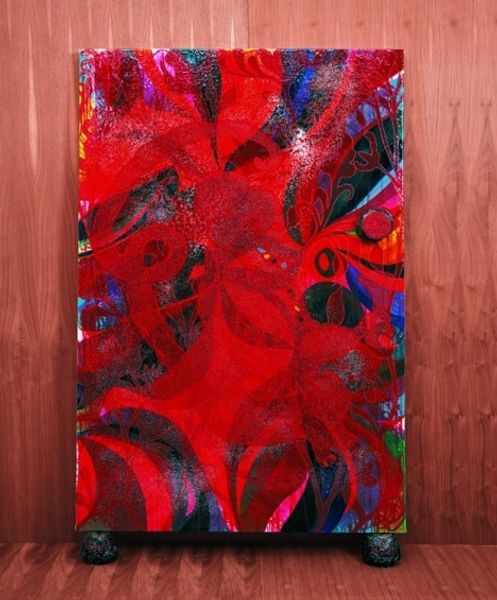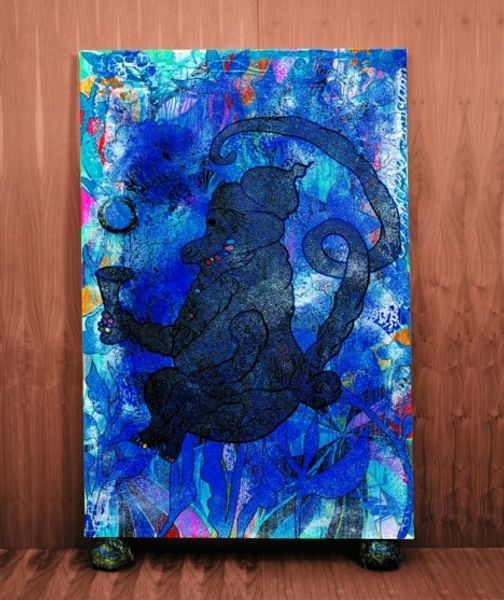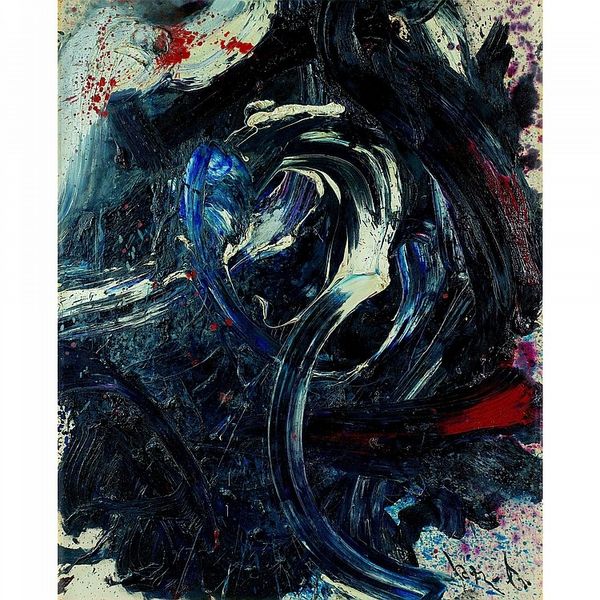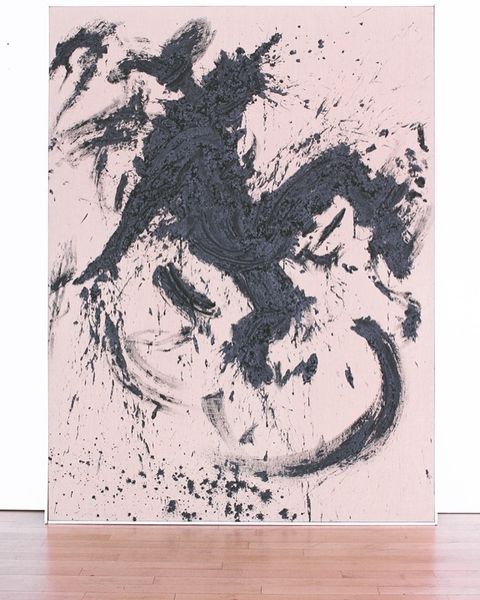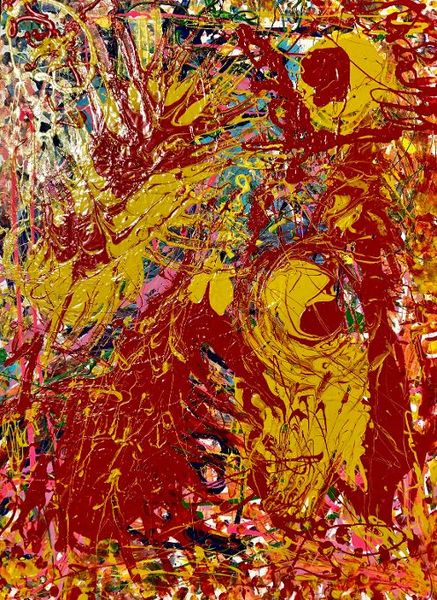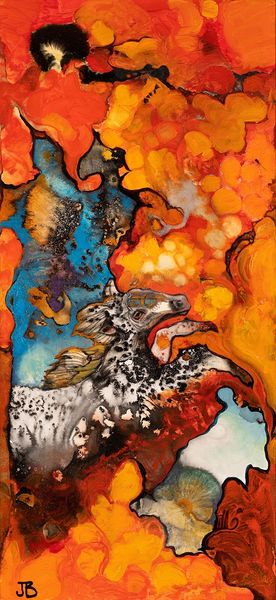
mixed-media, acrylic-paint
#
mixed-media
#
contemporary
#
abstract painting
#
graffiti art
#
acrylic-paint
#
figuration
#
graffiti-art
#
neo expressionist
#
acrylic on canvas
#
neo-expressionism
Copyright: Chris Ofili,Fair Use
Curator: Standing before us is Chris Ofili's work from 2002, titled "The Upper Room: Mono Negro," a striking piece rendered in mixed media, acrylic on canvas. What’s your initial impression? Editor: Visually, it's a bit chaotic, yet there's a strange harmony in its dissonance. The dark figure dominating the canvas is simultaneously imposing and obscured by the vibrancy surrounding it. I’m struck by how it plays with depth. Curator: The 'mono' in the title signals its monochromatic nature, which plays on deeper, hidden meanings within the composition. Black, after all, isn’t simply the absence of light but can represent mystery, mourning, and the unconscious. Coupled with Ofili's signature graffiti-art style, it speaks to a complex intersection of personal and collective narratives. Editor: Absolutely, and the layers upon layers suggest a palimpsest, concealing and revealing different elements. Look at how the application of the acrylic shifts from thick impasto in the background to thinner washes around the central figure, creating visual tension. The bright colours fighting with this huge figure? What is its relationship with all this chaotic expression? Curator: In African diasporic contexts, black is complex – signifying identity, power, and even spirituality. Think of traditional Yoruba art with its emphasis on bold lines and abstracted forms that tell stories. Ofili references this heritage, challenging Western art historical conventions while subtly weaving it into his work. It challenges us to explore themes beyond a simple color association. Editor: I appreciate that it shies away from easy interpretation. The amorphous central form disrupts expectations, forcing us to reconcile surface-level observation with symbolic inquiry. There's a certain primal energy that resists easy categorization, which in itself is incredibly compelling. Curator: Yes, it evokes something primordial and almost subconscious, wouldn’t you say? By uniting high art and 'street' sensibilities, he gives expression to historical and present experiences that lie somewhere beneath the canvas. Editor: Indeed, this offers a wealth of ideas that transcend visual expression; it opens pathways to understanding its emotional complexity. Curator: This intersection provides much to unpack and consider about culture, identity, and the nature of perception. Editor: A dense and fruitful interplay between visual dynamics and symbolic potential that one could endlessly scrutinize!
Comments
No comments
Be the first to comment and join the conversation on the ultimate creative platform.
